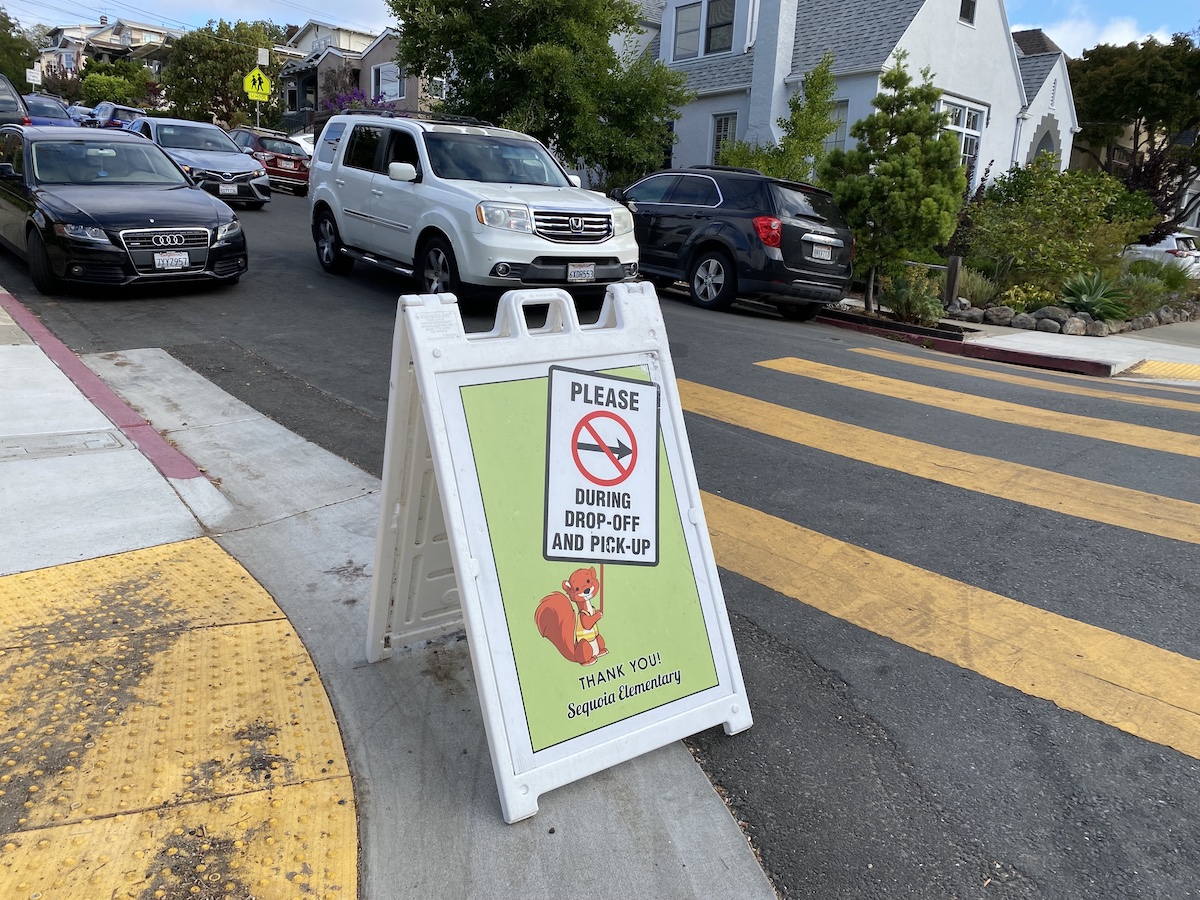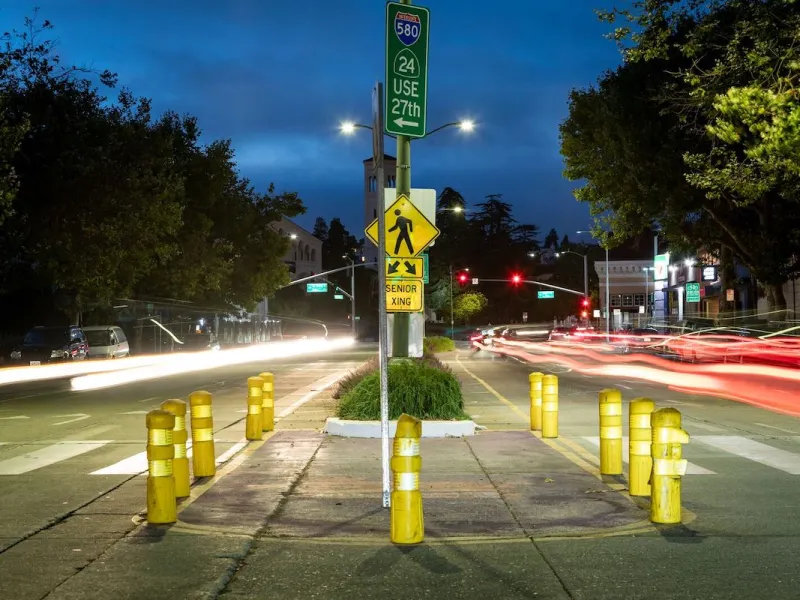Five major school-specific traffic safety projects will get underway this summer. That’s the good news for Oakland parents who want speeding drivers to slow down around their kids.
Cut through the jargon
But in their presentation on Monday before the Education Partnership Committee, a joint city and school board coordinating body, Oakland Transportation Department staff also offered a dispiriting reminder: These improvements are based on audits from the end of the 2017-18 school year. That means it has taken six years for the city to break ground on the five projects. There were Westlake Middle students dodging traffic on Harrison Street in 2017 who are now old enough to vote.
Called “Safe Routes to School,” the program was launched in 2017 to improve pedestrian and bike safety around 150 campuses.
While six years is not an uncommon wait time for capital improvement projects, school board director Mike Hutchinson said during this week’s meeting that it speaks to the huge design and construction backlog Oakland has on its hands.
The five major capital improvement projects breaking ground this summer will be around Yu Ming Elementary, Martin Luther King Jr. Elementary, Lincoln Elementary, Westlake Middle, and East Oakland Pride Elementary. Plans for the specific road changes have not been made available to the public yet but they are expected to include things like bulb-outs and new median islands to make it safer to cross the street.
Oakland spokesperson Sean Maher told us the reason for the long construction timeline is that some capital improvements were delayed in the mid-2010s because the city did not have the funds to pay for them. They were put back on the schedule once Oakland voters passed Measure KK in November 2016, gave which gave the city access to a $600 million bond for infrastructure.
Capital projects have long gestation periods because they require complex engineering work and reviews from multiple city departments and staff, according to an OakDOT report. Smaller infrastructure projects, like painting crosswalks, can be approved by a single engineer.
Transportation manager Joe Wang told the committee Monday that OakDOT receives more than 1,000 school-area traffic requests and works with 30 schools every year.
“Citywide, the number of requests outstrip the available resources to address them, and the team must prioritize among them,” Wang said. Any request from a school official is prioritized for review by OakDOT’s Safe Routes to School team.
The city said it figures to take on projects in 16 schools during the next capital improvement cycle, 2025–2027. Counting the 10 school projects finished before this cycle, that means the city is expected to have completed 31 school-related projects in the decade since the Safe Routes to School program began.
New OakDOT director Josh Rowan spoke to the committee on Monday—his first official appearance before the City Council. He said he understands the huge responsibility the agency has to design safer roads.
‘We are operating under the principle that if we make our streets safe for 8-year-olds and 80-year-olds, those of us in between are probably gonna be OK,” Rowan said. “We have some pretty interesting driver behavior that we’re having to work to resolve.”
At-Large Councilmember Rebecca Kaplan said it was “incredibly important” for young people to not have to worry about traffic hazards. These fears “create real impediments to folks walking and biking to schools,” she said.
Correction: Mike Hutchinson is not currently the school board president.


